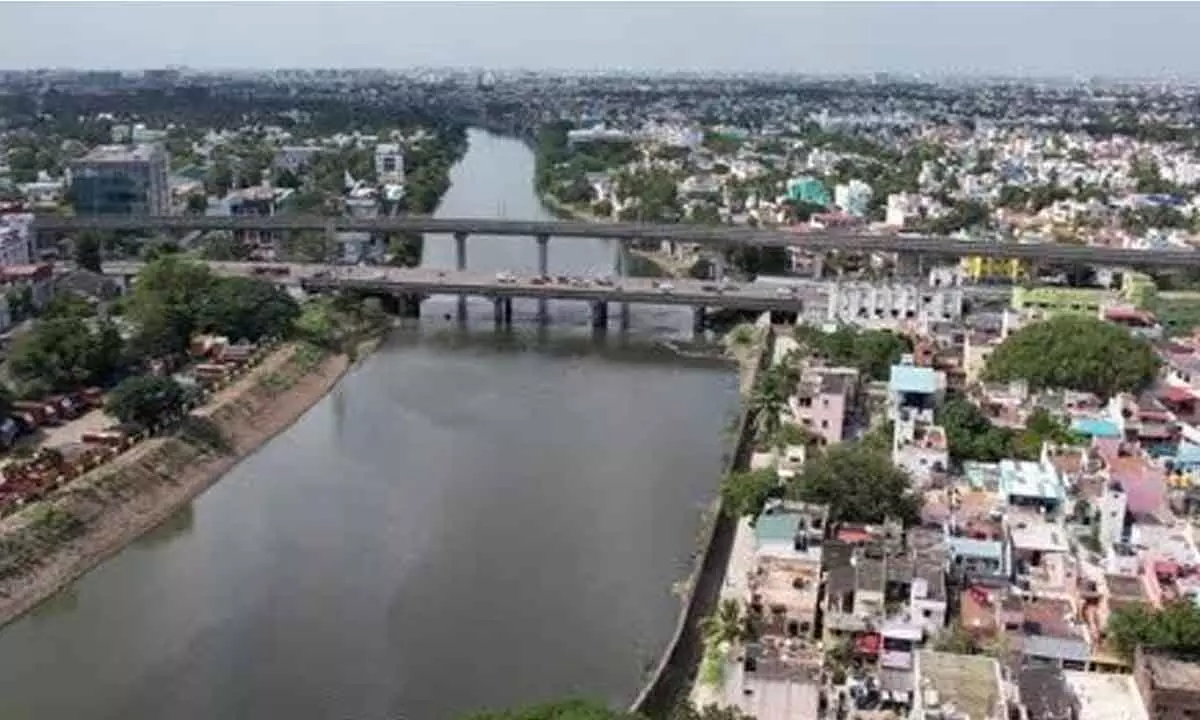Cooum in Chennai most polluted river in the country: CPCB

Biomedical Oxygen Demand (BOD) in the river between Avadi ands Sathya Nagar was 345 Mg per litre which is the highest among the 603 rivers of the country
Chennai: The Central Pollution Control Board (CPCB) in a recent report has termed the Cooum in Chennai the "most polluted" river in the country. According to the report, Biomedical Oxygen Demand (BOD) in the river between Avadi to Sathya Nagar was 345 Mg per litre which is the highest among the 603 rivers of the country. Interestingly, the Sabarmati river in Gujarat with a BOD of 292 mg per litre and Bahela in Uttar Pradesh with a BOD value of 287 mg per litre are second and third most polluted rivers respectively.
The report also states that the number of polluted rivers in Tamil Nadu has increased in the past four years. The CPCBA report titled, 'Polluted River Stretches for Restoration of Water Quality, 2022' states that the water quality of 12 rivers in Tamil Nadu was monitored at 73 locations during the period between 2019 to 2021.
Bio-Medical Oxygen Demand (BOD) in 53 locations of 10 rivers were not found complying with the prescribed water quality criteria, the report said. The 10 rivers where BOD was not found complying with the prescribed criteria are Adyar, Amaravati, Bhavani, Cauvery, Cooum, Palar, Sarabanga, Tamaraibarani, Vasishta and Tirumanimuthar in Tamil Nadu. Notably, Tamaraibarani and Cooum rivers have been highly polluted for the past few years with environmentalists and social workers relentlessly campaigning against the unabated pollution.
Even as the Cooum river has become the highly polluted river in the country, steps have been taken by the present government to clean it. Almost 80 per cent of encroachments along the river banks have been removed and three treatment plants have been set up at Langs Garden in Egmore, Nungambakkam and in Chetpet. The authorities are now focusing on preventing the flow of untreated sewage into it.
The polluted water will be biologically treated and after that, it undergoes sedimentation and filtration to enhance its quality. After this, the water is chlorinated for disinfection and ready for non-potable purposes like gardening. (IANS)










